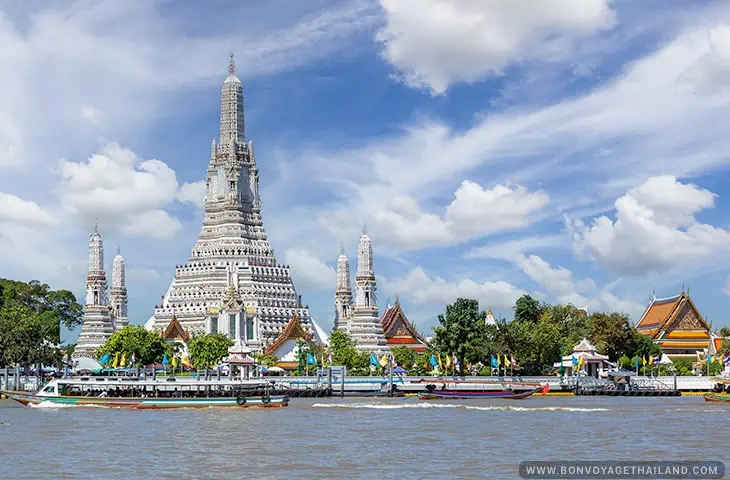
Wat Arun, also known as the Temple of Dawn, is one of the most famous and recognizable landmarks of Bangkok, Thailand. Located on the west bank of the Chao Phraya River, the temple is a must-see for tourists and locals alike.
Built in the early 19th century, Wat Arun has been renovated several times over the years to maintain its beauty and significance. The temple combines Khmer and Thai architectural styles, showcasing Thailand’s rich cultural heritage.
Whether you are looking for a peaceful place to meditate or simply enjoy a breathtaking view of the Bangkok skyline, Wat Arun is not to be missed.
Table of Contents
A Historical and Architectural Landmark of Bangkok
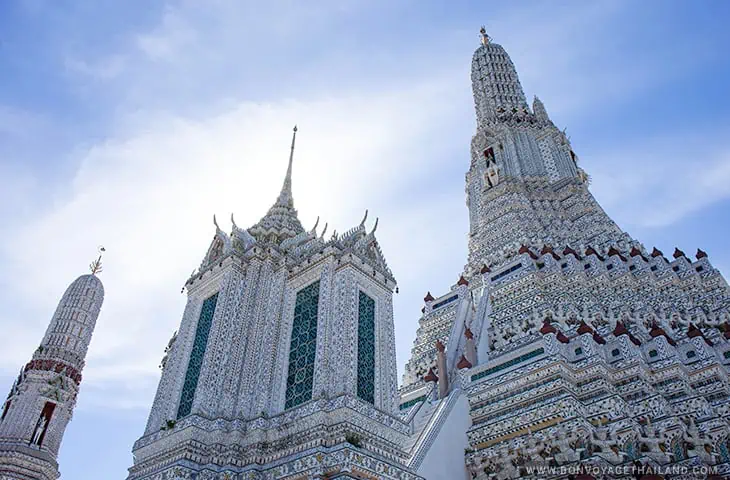
Its construction began in the seventeenth century during the Ayutthaya period. The temple was first named Wat Makok, but King Taksin renamed it when he passed by on his way to Ayutthaya and declared the dawn of a new era.
Wat Arun has been restored many times because of wars, lightning strikes, and earthquakes throughout history. Yet, it remains a landmark of Bangkok and showcases Thailand’s cultural heritage.
The main spire of the temple is over 80 meters high and decorated with colorful pieces of Chinese porcelain and shells. It’s truly a masterpiece of craftsmanship and engineering. The central Prang symbolizes Mount Meru, which according to Buddhist cosmology is the center of the universe.
Visiting Wat Arun is a unique experience. When you contemplate its beauty, you can’t help but appreciate the dedication and skill it took to build such a magnificent structure. It’s a testament to human ingenuity and creativity that has withstood the test of time.
The Tranquil Interior of Wat Arun: A Golden Haven for Worship and Reflection
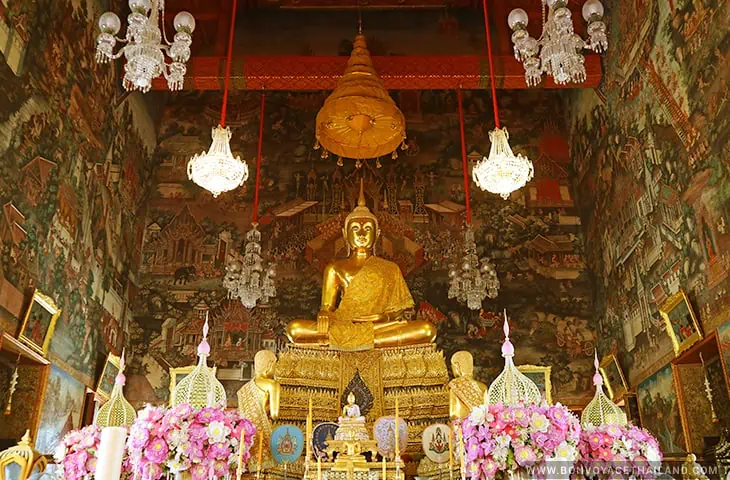
The interior of Wat Arun was dimly lit, the only source of light being the flickering candles that adorned every corner. The air was thick with incense smoke that gave off a musky aroma that lingered in your nose. Despite the darkness, you could make out the elaborate carvings and golden statues of the various deities on the walls.
As you walked further into the temple, you noticed a group of monks sitting cross-legged on the floor, chanting softly. Their voices were melodic and soothing, and it was easy to get lost in their rhythmic intonations.
You sat down next to them and closed your eyes to let their words wash over you.
When you opened your eyes again, it was dawn outside. The first rays of sunlight were falling through the windows, casting a warm glow on everything you saw. You felt peaceful and refreshed as you left the temple, ready to begin a new day.
Visiting Wat Arun
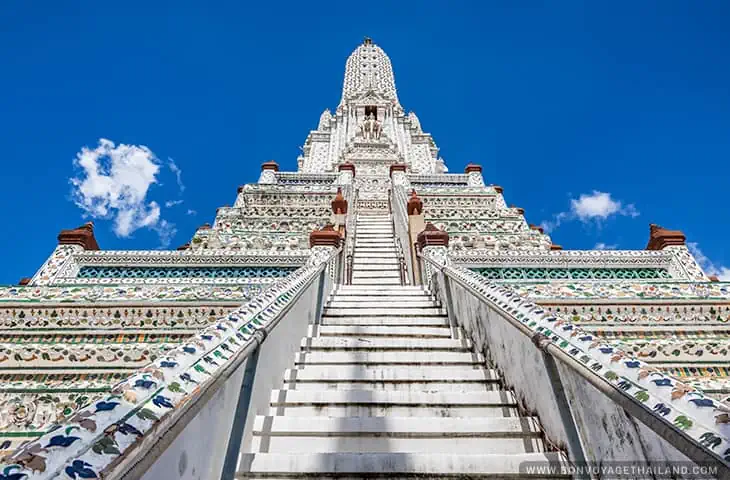
The Temple of Dawn, Wat Arun, is a must-see for any visitor to Bangkok. As you approach the temple, the intricate details and vibrant colors of the pagoda will amaze you.
The climb to the top of the temple may be daunting, but it’s worth it for the breathtaking view of the Chao Phraya River. Wear comfortable shoes as you climb the steep steps to Wat Arun.
Once at the top, take a moment to appreciate the intricate architecture and breathtaking views. It’s easy to get lost in thought as you admire this masterpiece.
As you descend from Wat Arun, take some time to explore the surrounding area. The riverside location provides ample opportunity for a leisurely stroll or boat ride on the river.
Don’t forget to take some photos of this beautiful temple before you leave.
Explore The Temple Grounds And Admire The Stunning Architecture.
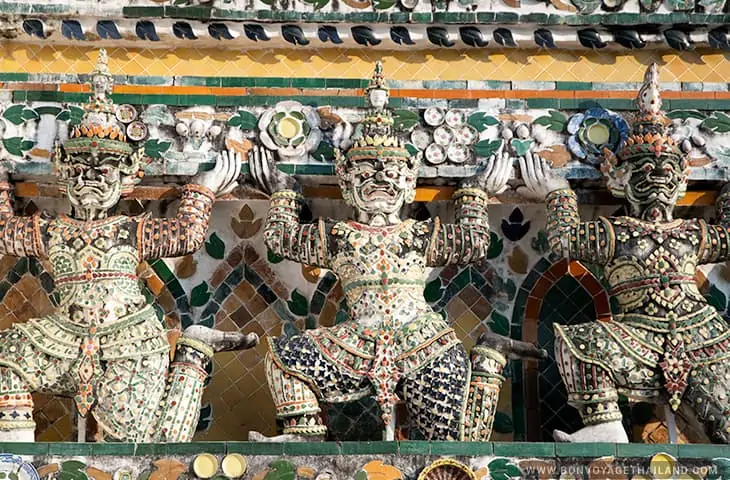
The temple complex of Wat Arun is a real feast for the eyes. The breathtaking architecture is a testament to the intricate craftsmanship of the Thai people.
As I wandered through the complex, I was struck by the attention to detail in every corner. From the towering spires to the intricate carvings, every inch of this temple exudes beauty and grandeur.
The golden rays of the sun cast a warm glow on the intricate details, making them even more magnificent. It’s no wonder that Wat Arun is known as the Temple of Dawn – at sunrise and sunset it shines in all its glory.
As I stood there taking in everything that surrounded me, I couldn’t help but feel a sense of peace. The tranquil atmosphere and breathtaking views made the visit an unforgettable experience.
Wat Arun is truly a jewel in Bangkok’s crown that no visitor to this vibrant city should miss.
Visit the temple’s museum to learn more about its history
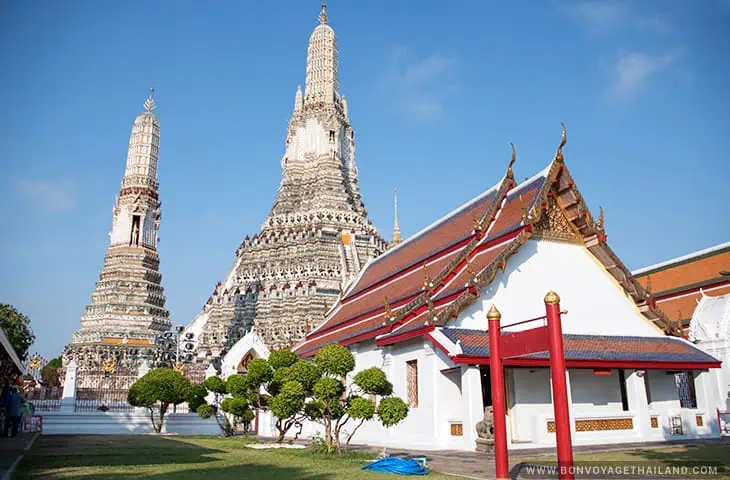
A visit to the temple’s museum will provide you with a deeper understanding of the fascinating history of Wat Arun. Here you can discover a wealth of detailed information about the temple’s importance in Thai culture and learn how various kings used the temple to assert their power and authority.
With an impressive array of photographs, artifacts, and exhibits, the museum offers a comprehensive experience that brings the history of the temple to life. A particularly fascinating aspect of the museum is the collection of ancient relics found during restoration. These artifacts offer a unique insight into the construction and transformation of the temple over time.
If you’re interested in the religious beliefs and practices associated with Wat Arun, the museum is an excellent resource for learning more about Buddhism in Thailand. From its rich history to its cultural significance, the museum offers a fascinating insight into one of the country’s most famous temples.
Take A Boat Trip Around The Temple To See It From A Different Perspective
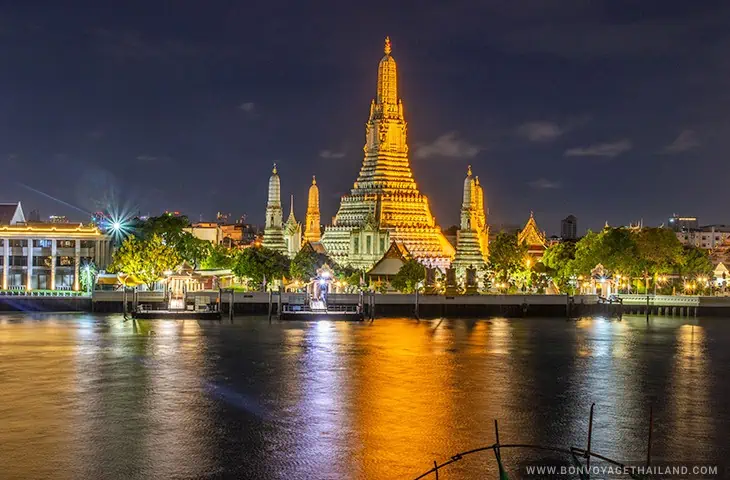
If you’re looking for a unique way to experience the beauty of Wat Arun, then a boat ride is a must for your visit.
A boat ride around the temple will allow you to see the impressive architecture and intricate details of the temple from a different perspective.
As you glide along the river, you’ll have the chance to see the temple’s spires towering over the surrounding buildings and trees.
By night the reflection of the illuminated Wat Arun in the river creates an enchanting atmosphere that leaves a lasting impression. A boat ride is the perfect way to enjoy the spectacular sight of the temple after sunset.
There are different types of boats you can choose for your tour around Wat Arun. You can opt for a traditional long-tail boat or a modern speedboat. You can also choose between a private tour and a group tour, depending on your preferences and budget.
A boat ride around Wat Arun is a great way to experience this Bangkok landmark from a different perspective. So, if you’re planning a trip to Bangkok, you shouldn’t miss this unforgettable experience.
Conclusion
Overall, visiting Wat Arun is a must-do for anyone traveling to Bangkok. It is an unforgettable experience that will leave you with memories to last a lifetime.
In conclusion, visiting Wat Arun in Bangkok is a truly unforgettable experience. You’ll be overwhelmed by the temple’s rich history and intricate architecture. It’s truly one of the most beautiful temples in Thailand.
As you explore the temple complex, you’ll feel a sense of awe and wonder. Every single detail of Wat Arun has been masterfully crafted, from the amazing spires to the intricate carvings.
What should I wear when visiting Wat Arun?
It’s important to dress modestly and respectfully when visiting a Buddhist temple in Thailand, so make sure your shoulders and knees are covered. Loose, comfortable clothing is also recommended as you’ll likely be doing a lot of walking and stair climbing. You’ll also need to remove your shoes before entering the temple. If you wear slip-on shoes or sandals, it’ll be easier to take them off and put them back on.
When is the best time of day to visit Wat Arun?
Wat Arun is a popular tourist attraction in Bangkok, so it can get quite crowded, especially during peak tourist season. To avoid the crowds and the heat, it’s recommended to visit the temple early in the morning when it first opens, or later in the evening when it’s cooler. If you time your visit for sunset, you can see the temple beautifully lit against the backdrop of the setting sun.
